Finite Element Simulation of Amphora Dispersion in the 4th Century BC Shipwreck off the Island of Žirje, Croatia: A Case Study in Maritime Archaeology
Abstract
1. Introduction
- Section 2—Materials and methods outlines the selection and scaling of the ship model, the reconstruction of amphora and seabed geometry, and the finite element modelling strategy applied using LS-DYNA.
- Section 3—The shipwreck site presents the characteristics of the Žirje site, including amphora typology, distribution patterns, and supporting photogrammetric documentation.
- Section 4—Numerical model describes the mesh configuration, material properties, boundary conditions, and applied loading parameters used in the simulation.
- Section 5—Results presents the outcomes of parametric simulations, focusing on the effects of initial ship orientation, gravity differentiation, and seabed interaction on the dispersal of amphorae.
- Section 6—Discussion examines the correspondence between simulated amphora dispersal and the archaeological record, addressing modelling assumptions, limitations, and implications for interpreting shipwreck site formation.
- Section 7—Conclusion summarises the key findings and outlines potential directions for future research.
2. Materials and Methods
2.1. Ship Model Selection and Scaling
2.2. Amphora Typology and Cargo Modelling
2.3. Seabed Topography and Environmental Representation
2.4. Finite Element Model and Simulation Setup
3. The Shipwreck Site
4. Numerical Model
4.1. Model Assumptions
- Long-term post-depositional effects such as sedimentation, erosion, or biological disturbance were excluded from the simulation scope.
- Amphorae and ship were modelled as rigid, unreformable bodies, without accounting for breakage, fragmentation, or structural damage during impact or contact.
- Bottom impact was modelled as an instantaneous transition to the second phase, with no progressive or dynamic deformation of the seabed
- For the Žirje vessel, only the cargo mass (amphorae and ceramics) is known, which is approximately 6 tons, with the estimated mass of the ship at 6.5 tons, resulting in a combined weight of around 12.5 tons
4.2. Geometry, Materials, and Meshing
4.3. Contact, Boundary Conditions, and Simulation Parameters
5. Results
5.1. Analysis of Initial Orientation and Sinking Conditions
5.2. Final Shipwreck Scenario
- The only plausible condition is non-uniform sinking, in which the ship and its cargo are subjected to different gravitational accelerations. In contrast, uniform sinking would cause the amphorae to remain trapped within the hull and likely buried in sediment.
- Surge and sway components during the descent are considered negligible due to the high hydrodynamic resistance of the water. As a result, vertical heave motion is assumed to dominate the submersion process.
- Parametric results indicate that only an initial roll of 40°, or a combination of 40° roll and 20° yaw, produces sufficient amphorae dispersion during sinking.
- Even under optimal conditions, the dispersion pattern does not fully replicate the archaeological site. Therefore, additional environmental effects—specifically seabed currents—are considered necessary to explain the extended spread of amphorae.
6. Discussion
7. Conclusions
- Uniform sinking, where both the ship and cargo are subjected to the same gravitational acceleration, did not lead to realistic cargo dispersal. Amphorae remained confined within the hull and would likely have been buried by sedimentation, which contradicts the widespread distribution observed during site investigations.
- Non-uniform sinking, achieved by applying different gravitational accelerations to the ship and the cargo, enabled amphorae to separate from the hull. This configuration better explains how the cargo could have escaped and scattered across the seabed.
- Initial roll angles of 30 to 40 degrees proved essential for producing wider cargo dispersion. Lower roll values and yaw alone did not result in meaningful scatter.
- Final amphorae distribution comparable to that documented at the Žirje site could not be achieved without introducing sea current effects. When transient bottom currents were added, dispersal expanded up to 20 m in diameter, aligning with photogrammetry data.
- Surge and heave motion in the non-uniform case was more pronounced, particularly during cargo release, indicating that cargo behaviour significantly influences the vessel’s external dynamics during sinking.
Author Contributions
Funding
Institutional Review Board Statement
Informed Consent Statement
Data Availability Statement
Conflicts of Interest
References
- Rudan, S.; Sviličić, Š.; Bolf, D.; Radić Rossi, I. Numerical reconstruction in maritime archaeology. J. Mar. Sci. Eng. 2023, 11, 1184. [Google Scholar] [CrossRef]
- Rudan, S.; Radić Rossi, I. Numerical simulation of a sinking ship scenario based on archaeological records. Archaeol. Adriat. 2020, 14, 139–157. [Google Scholar] [CrossRef]
- Afshar, R.; Alavyoon, N.; Ahlgren, A.; Gamstedt, E.K. Full scale finite element modelling and analysis of the 17th-century warship vasa: A methodological approach and preliminary results. Eng. Struct. 2021, 231, 111765. [Google Scholar] [CrossRef]
- Palmer, C. Windward sailing capabilities of ancient vessels. Int. J. Naut. Archaeol. 2009, 38, 314–330. [Google Scholar] [CrossRef]
- Lasher, W.C.; Flaherty, L.S. CFD analysis of the survivability of a square-rigged sailing vessel. Eng. Appl. Comput. Fluid Mech. 2009, 3, 71–83. [Google Scholar] [CrossRef]
- Ciortan, C.; Fonseca, N. Numerical simulations of the sails of a XVIth century Portuguese Nau. In Proceedings of the International Conference on Computational Methods in Marine Engineering (MARINE 2011), Lisbon, Portugal, 28–30 September 2011; pp. 278–289. [Google Scholar]
- Stettler, J.W.; Thomas, B.S. Flooding and structural forensic analysis of the sinking of the RMS titanic. Ships Offshore Struct. 2013, 8, 346–366. [Google Scholar] [CrossRef]
- Kery, S. Marine Forensics: The Art and Science of Simulating Ships in Storm Conditions. In Proceedings of the Interservice/Industry Training, Simulation, and Education Conference (I/ITSEC) 2017, Orlando, FL, USA, 27 November–1 December 2017. [Google Scholar]
- Subbaiah, B.V.; Thampi, S.G.; Rambabu, N.; Mustafa, V.; Akbar, M.A. Characterization and CFD analysis of traditional vessels of Kerala. Int. J. Innov. Technol. Explor. Eng. 2020, 9, 132–149. [Google Scholar] [CrossRef]
- Fawsitt, S.; Hobberstad, L.C. Computational fluid dynamics: Floating a digital barcode 02. Archaeonautica 2021, 21, 325–330. [Google Scholar] [CrossRef]
- Miše, M. Provenance studies of transport amphorae from the Žirje shipwreck. In Where This Ship is Saling To? Shipwreck from the 4th Century BC on the Seabed of the Island of Žirje, Exhibition Catalogue; Miliša, M., Miše, M., Radić Rossi, I., Rogošić, F., Eds.; Art Academy of the University of Split: Split, Croatia, 2022; pp. 27–38. [Google Scholar]
- Barone, G.; Mazzoleni, P.; La Russa, M.F.; Pezzino, A. Archaeometric analyses on ‘Corinthian B’ transport amphorae found at Gela (Sicily, Italy). Archaeometry 2004, 46, 553–568. [Google Scholar] [CrossRef]
- Barilaro, D.; Barone, G.; Crupi, V.; Majolino, D.; Mazzoleni, P.; Triscari, M.; Venuti, V. Characterization of ancient amphorae by spectroscopic techniques. Vib. Spectrosc. 2006, 42, 381–386. [Google Scholar] [CrossRef]
- Le Sourne, H.; Couty, N.; Besnier, F.; Kammerer, C.; Legavre, H. LS-DYNA applications in shipbuilding. In Proceedings of the 4th European LS-DYNA Users Conference, Ulm, Germany, 22–23 May 2003; pp. A-II-01–A-II-16. [Google Scholar]
- Kim, S.J.; Sohn, J.M.; Kujala, P.; Hirdaris, S. A simplified fluid–structure interaction model for the assessment of ship hard grounding. J. Mar. Sci. Eng. 2022, 10, 211. [Google Scholar] [CrossRef]
- Radić Rossi, I.; Grisonic, M.; Batur, K. The newly discovered 4th century BC shipwreck at the island of Žirje. In Where is This Ship Sailing To? Shipwreck from the 4th Century BC in the Seabed of the Island of Žirje; Miliša, M., Miše, M., Eds.; Art Academy of the University of Split: Split, Croatia, 2022; pp. 11–26. [Google Scholar]
- Rudan, S.; Radić Rossi, I.; Jerat, G.; Zamarin, A.; Sviličić, Š.; Lucchini, A. The effect of changing the beam of an ancient ship’s hull on its capacity, stability, and performance. Heritage 2024, 7, 6712–6728. [Google Scholar] [CrossRef]
- Steffy, J.R. Wooden Ship Building and the Interpretation of Shipwrecks; Texas A&M University Press: College Station, TX, USA, 1994. [Google Scholar]
- Robert McNeel & Associates. Rhinoceros 3D, Version 7.0; Robert McNeel & Associates: Seattle, WA, USA, 2020. Available online: https://www.rhino3d.com (accessed on 16 May 2025).
- Semeraro, G.; Notarstefano, F.; Caldariola, R.; Quarta, G.; Calcagnile, L. Investigations on provenance and content of archaic transport amphorae from Castello di Alceste (S. Vito dei Normanni-Br) by chemical analyses through XRF/FP and GC-MS. In Proceedings of the IMEKO TC4 International Conference on Metrology for Archaeology and Cultural Heritage, Lecce, Italy, 23–25 October 2017; pp. 388–392. [Google Scholar]
- Miše, M.; Quinn, P.S. Origins and distribution of Hellenistic and late republican transport amphorae in the dalmatian region and its implications for Adriatic trade and economy. Archaeol. Anthropol. Sci. 2022, 14, 225. [Google Scholar] [CrossRef]
- Mazza, D.; Parente, L.; Cifaldi, D.; Meo, A.; Senatore, M.R.; Guadagno, F.; Revellino, P. Quick bathymetry mapping of a Roman archaeological site using RTK UAS-based photogrammetry. Front. Earth Sci. 2023, 11. [Google Scholar] [CrossRef]
- Wu, M.; Han, X.; Qin, Z.; Zhang, Z.; Xi, G.; Han, L. A quasi-nondestructive evaluation method for physical-mechanical properties of fragile archaeological wood with TMA: A case study of an 800-year-old shipwreck. Forests 2022, 13, 38. [Google Scholar] [CrossRef]
- Helfman, N.; Nishri, B.; Cvikel, D. Finite element analysis of shell-first and longitudinally reinforced frame-based wooden ships. J. Mari. Arch. 2019, 14, 291–309. [Google Scholar] [CrossRef]
- ANSYS, Inc. Technical Guide for Explicit Analyses using ANSYS LS-DYNA; ANSYS: Canonsburg, PA, USA, 2024. [Google Scholar]
- Livermore Software Technology Corp. Contact Modeling in LS-DYNA User’s Guide; LSTC: Livermore, CA, USA, 2023. [Google Scholar]
- Bolaños, R.; Tornfeldt Sørensen, J.V.; Benetazzo, A.; Carniel, S.; Sclavo, M. Modelling ocean currents in the northern Adriatic sea. Cont. Shelf Res. 2014, 87, 54–72. [Google Scholar] [CrossRef]
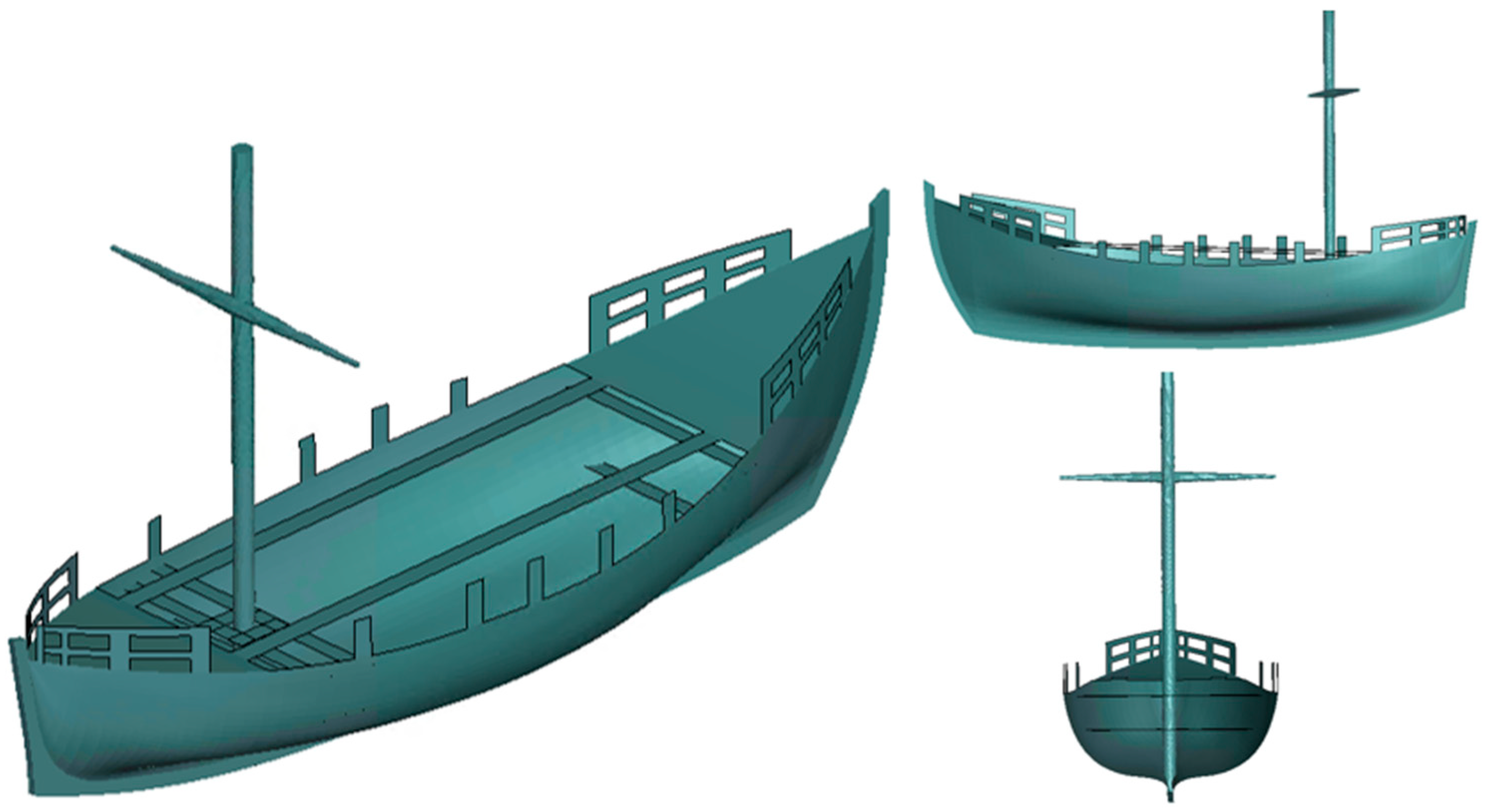
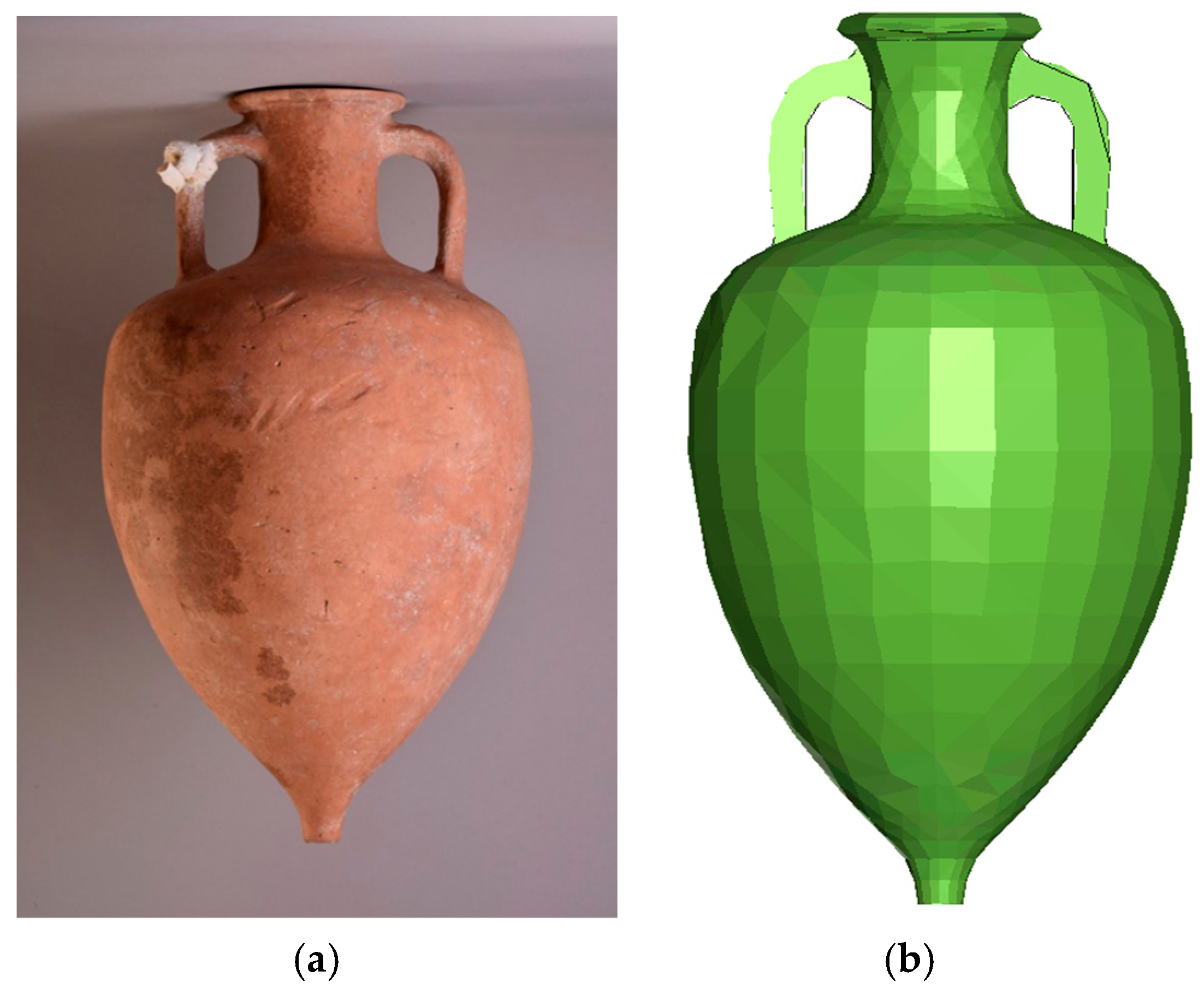
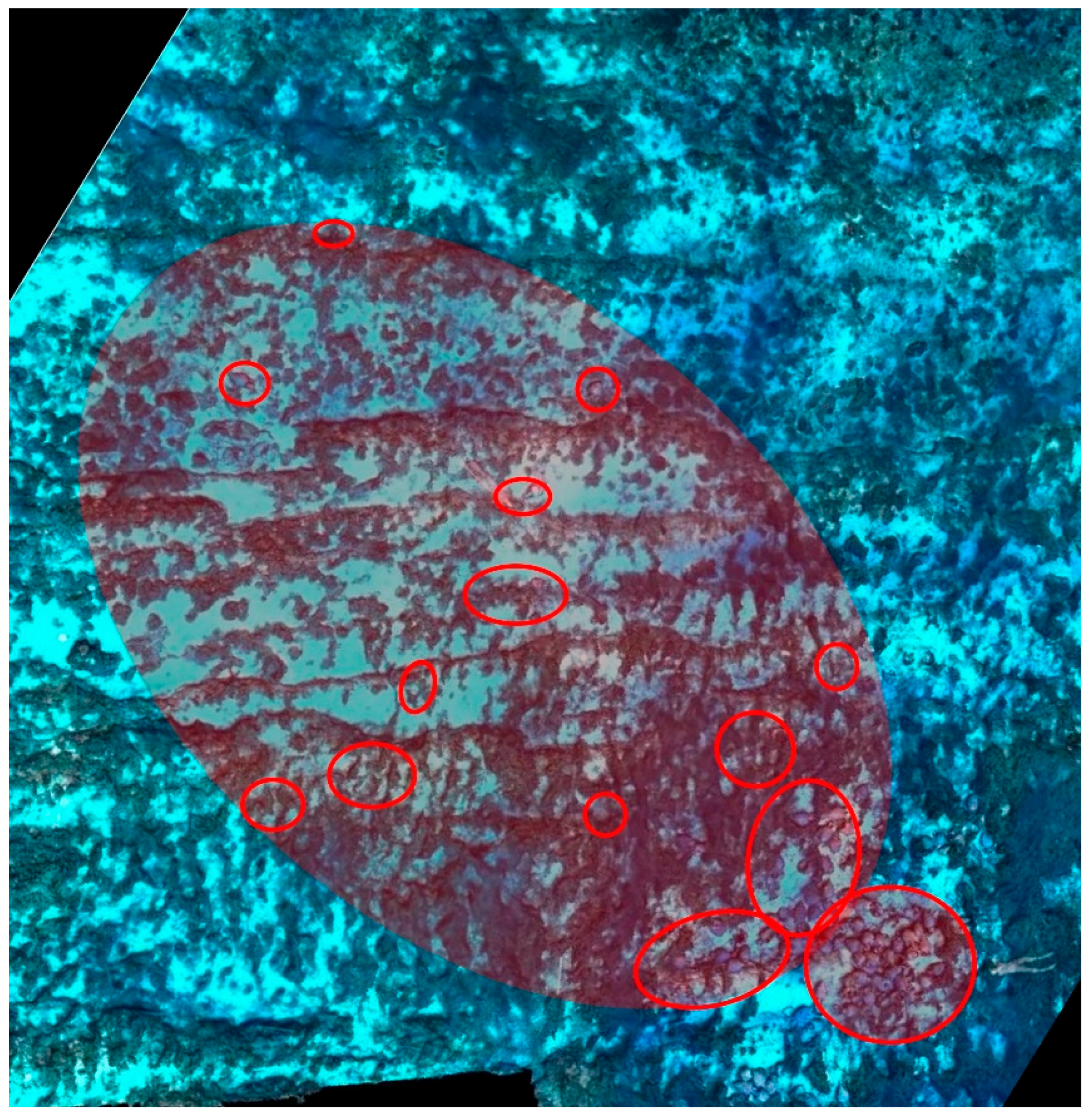
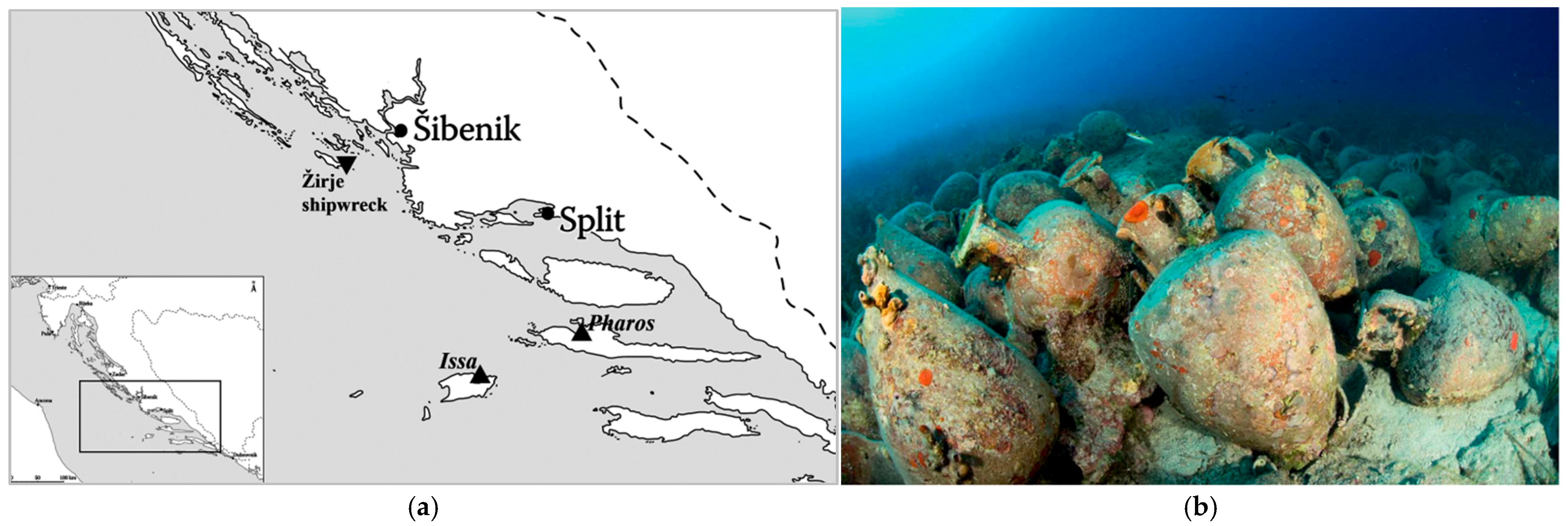
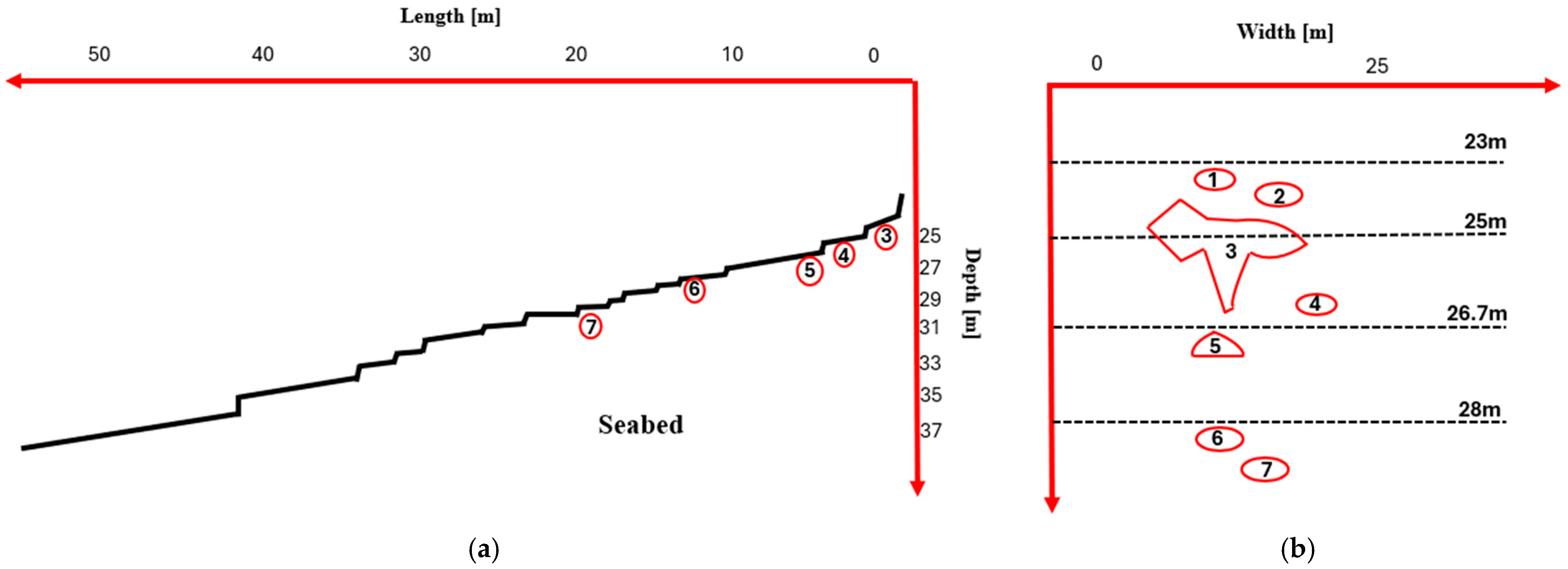
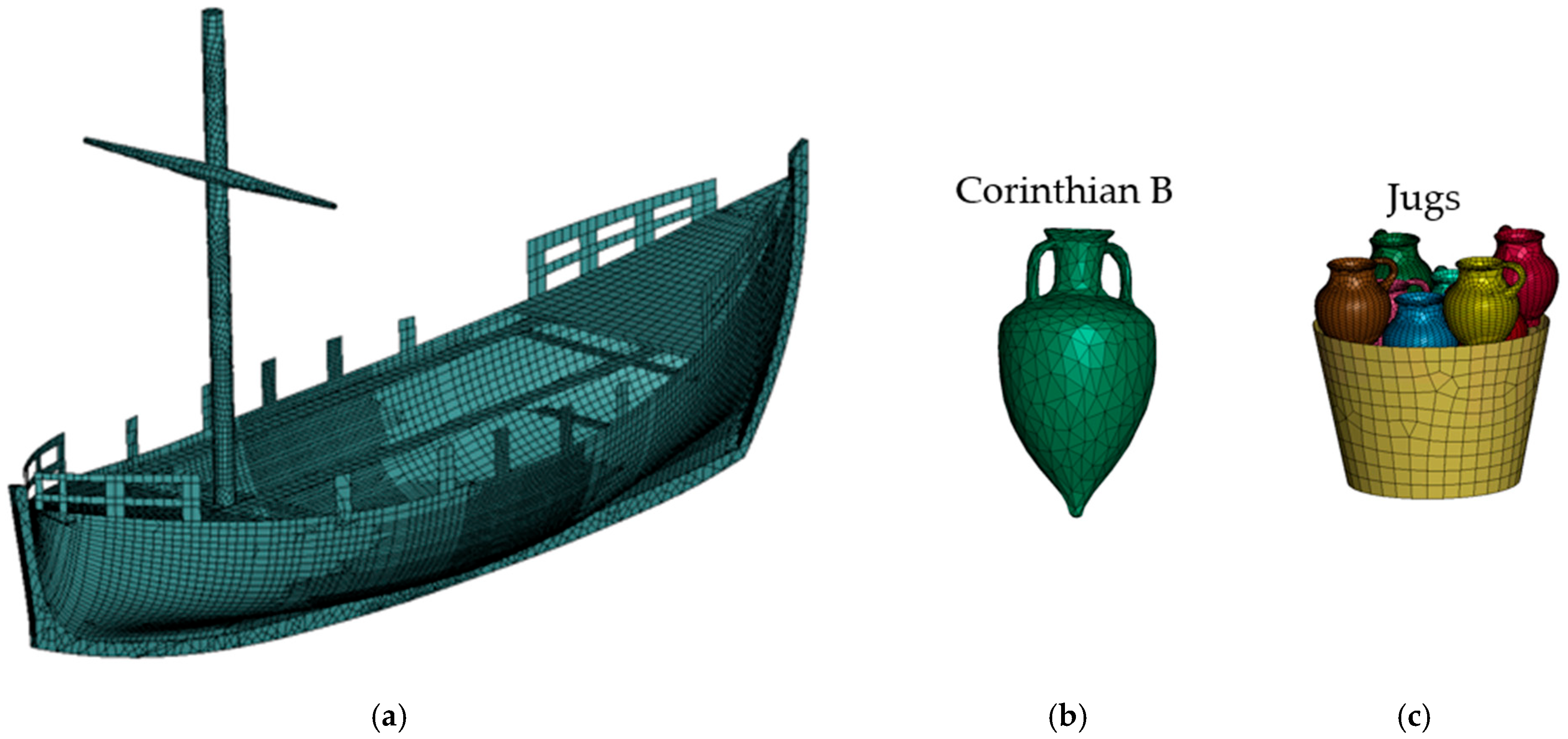
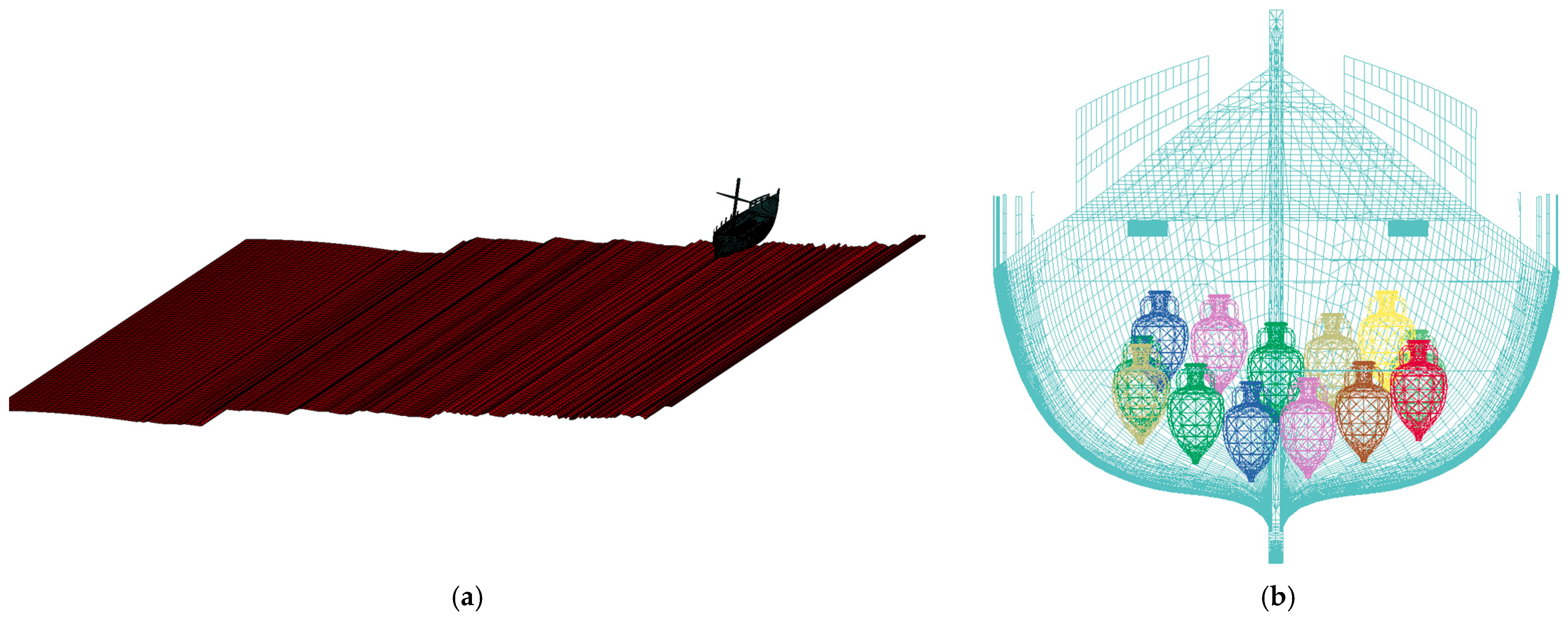

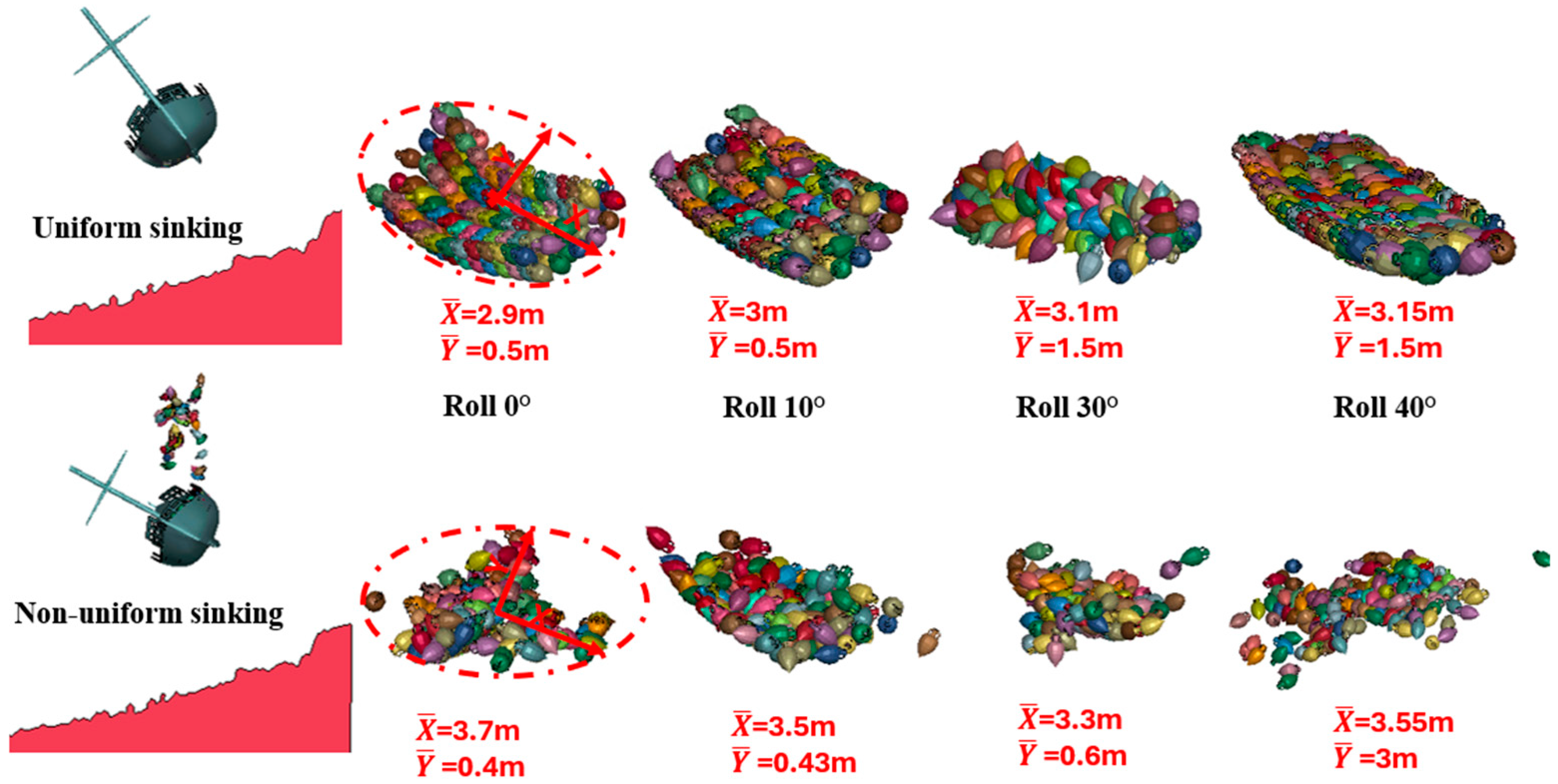
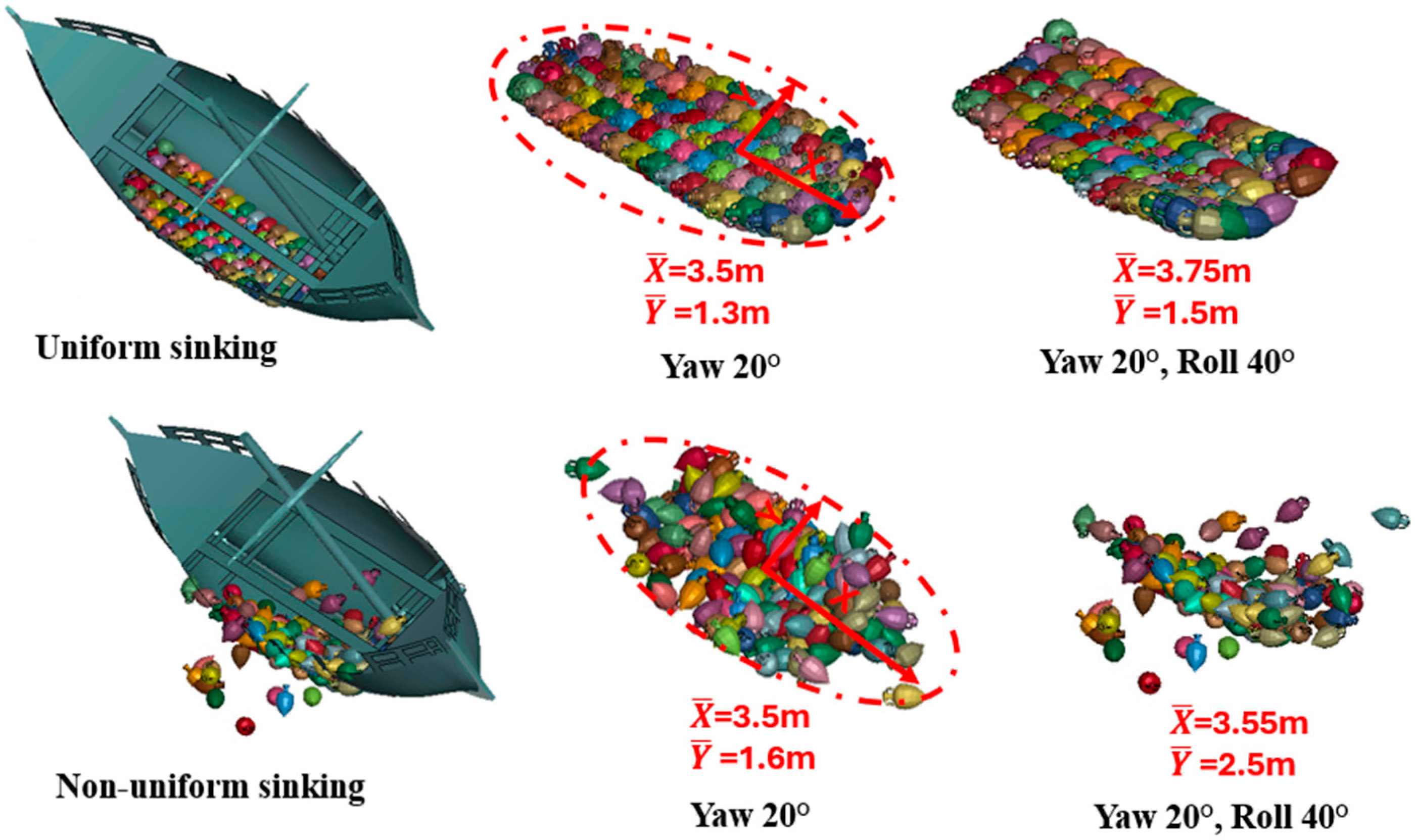
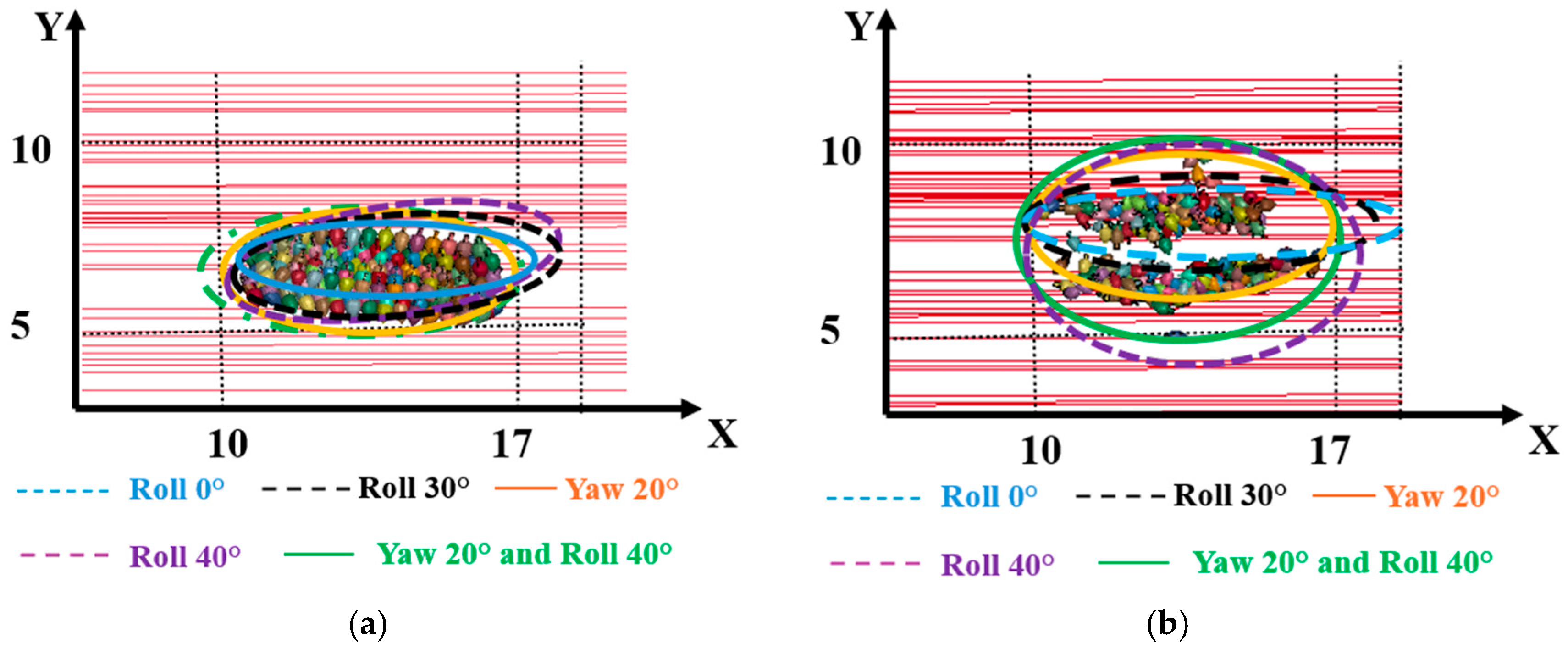
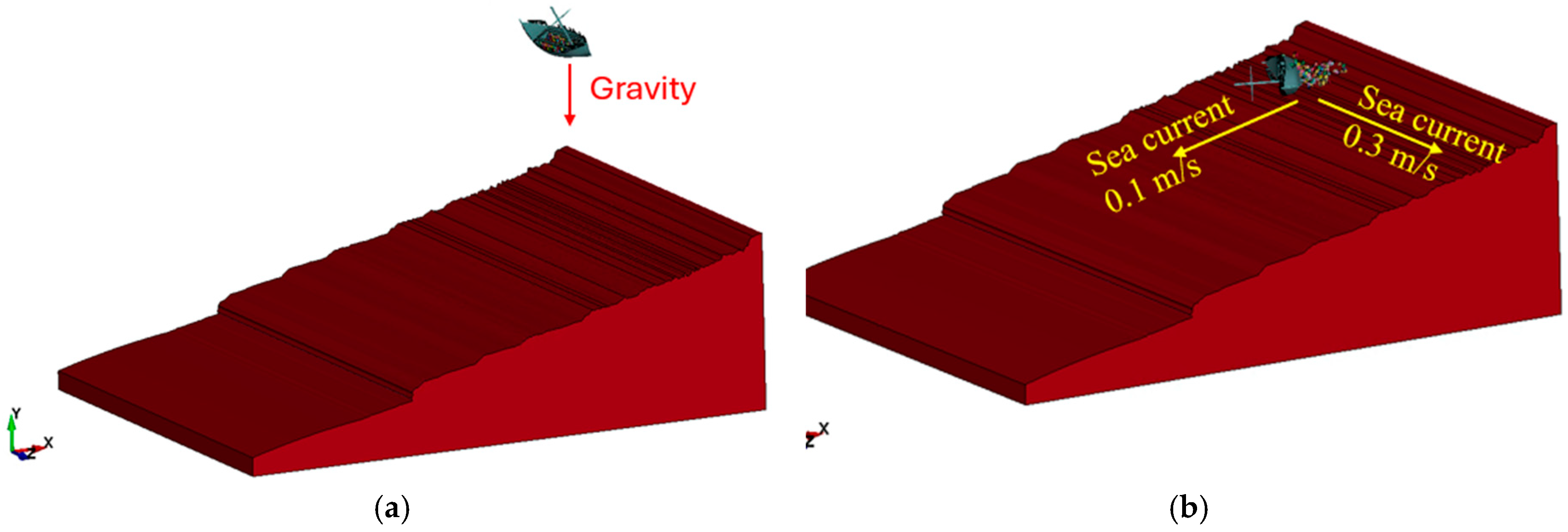
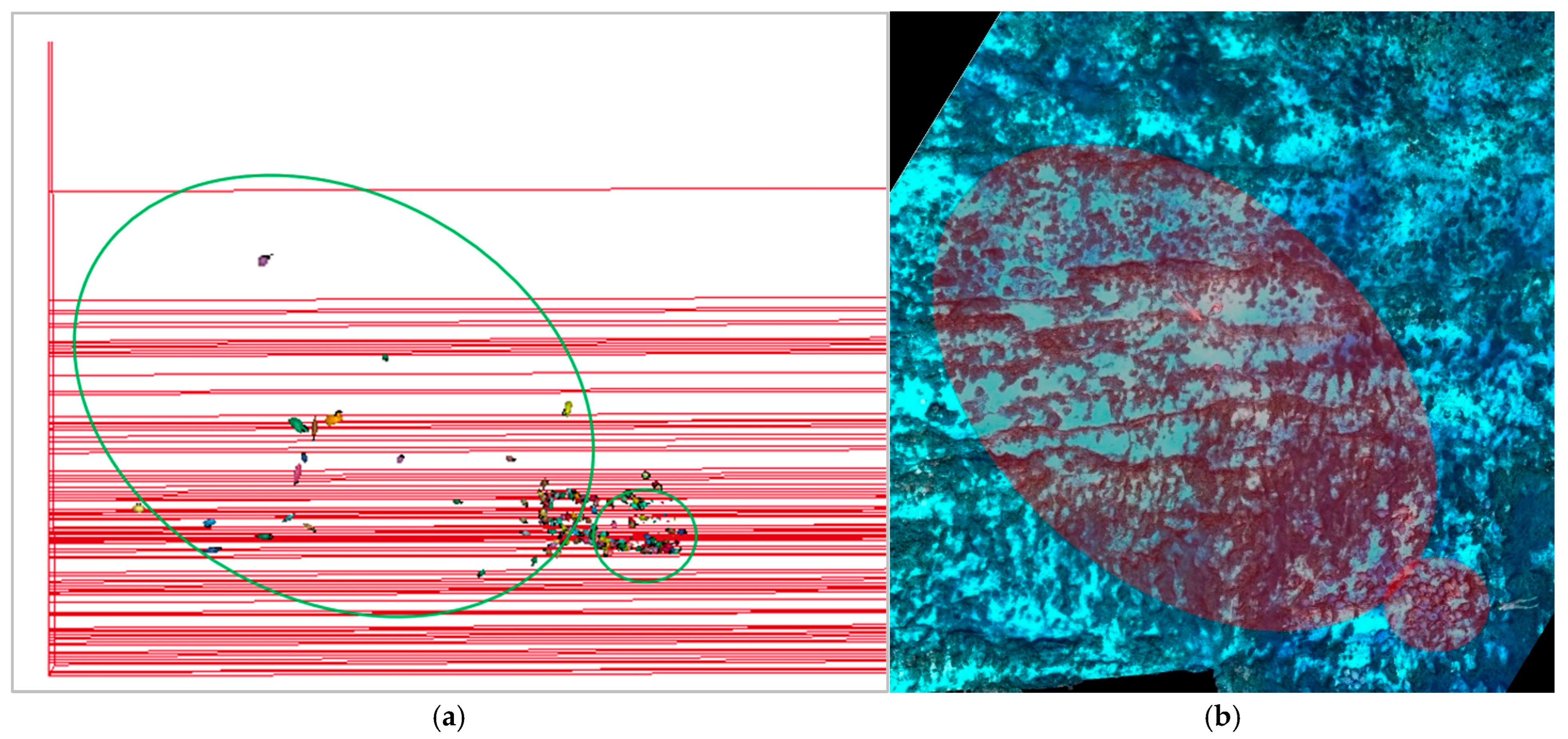
| Simulation | Uniform Sinking | Simulation | Non-Uniform Sinking |
|---|---|---|---|
| 1. | Roll 0°; Yaw 0° | 9. | Roll 0°; Yaw 0° |
| 2. | Roll 10°; Yaw 0° | 10. | Roll 10°; Yaw 0° |
| 3. | Roll 30°; Yaw 0° | 11. | Roll 30°; Yaw 0° |
| 4. | Roll 40°; Yaw 0° | 12. | Roll 40°; Yaw 0° |
| 5. | Roll 0°; Yaw 10° | 13. | Roll 0°; Yaw 10° |
| 6. | Roll 0°; Yaw 20° | 14. | Roll 0°; Yaw 20° |
| 7. | Roll 20°; Yaw 20° | 15. | Roll 20°; Yaw 20° |
| 8. | Roll 40°; Yaw 20° | 16. | Roll 40°; Yaw 20° |
Disclaimer/Publisher’s Note: The statements, opinions and data contained in all publications are solely those of the individual author(s) and contributor(s) and not of MDPI and/or the editor(s). MDPI and/or the editor(s) disclaim responsibility for any injury to people or property resulting from any ideas, methods, instructions or products referred to in the content. |
© 2025 by the authors. Licensee MDPI, Basel, Switzerland. This article is an open access article distributed under the terms and conditions of the Creative Commons Attribution (CC BY) license (https://creativecommons.org/licenses/by/4.0/).
Share and Cite
Sviličić, Š.; Rudan, S.; Radić Rossi, I. Finite Element Simulation of Amphora Dispersion in the 4th Century BC Shipwreck off the Island of Žirje, Croatia: A Case Study in Maritime Archaeology. Heritage 2025, 8, 373. https://doi.org/10.3390/heritage8090373
Sviličić Š, Rudan S, Radić Rossi I. Finite Element Simulation of Amphora Dispersion in the 4th Century BC Shipwreck off the Island of Žirje, Croatia: A Case Study in Maritime Archaeology. Heritage. 2025; 8(9):373. https://doi.org/10.3390/heritage8090373
Chicago/Turabian StyleSviličić, Šimun, Smiljko Rudan, and Irena Radić Rossi. 2025. "Finite Element Simulation of Amphora Dispersion in the 4th Century BC Shipwreck off the Island of Žirje, Croatia: A Case Study in Maritime Archaeology" Heritage 8, no. 9: 373. https://doi.org/10.3390/heritage8090373
APA StyleSviličić, Š., Rudan, S., & Radić Rossi, I. (2025). Finite Element Simulation of Amphora Dispersion in the 4th Century BC Shipwreck off the Island of Žirje, Croatia: A Case Study in Maritime Archaeology. Heritage, 8(9), 373. https://doi.org/10.3390/heritage8090373








